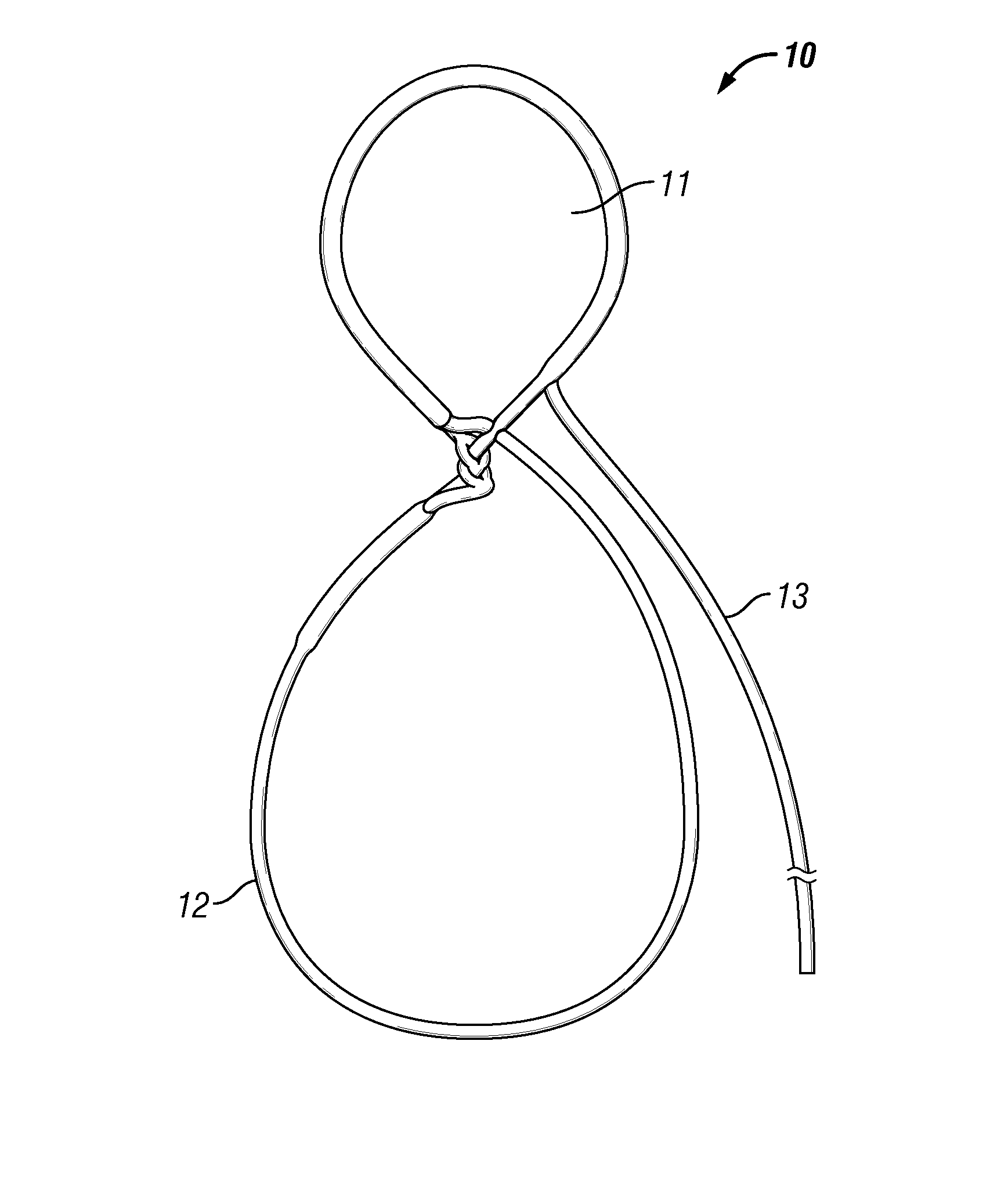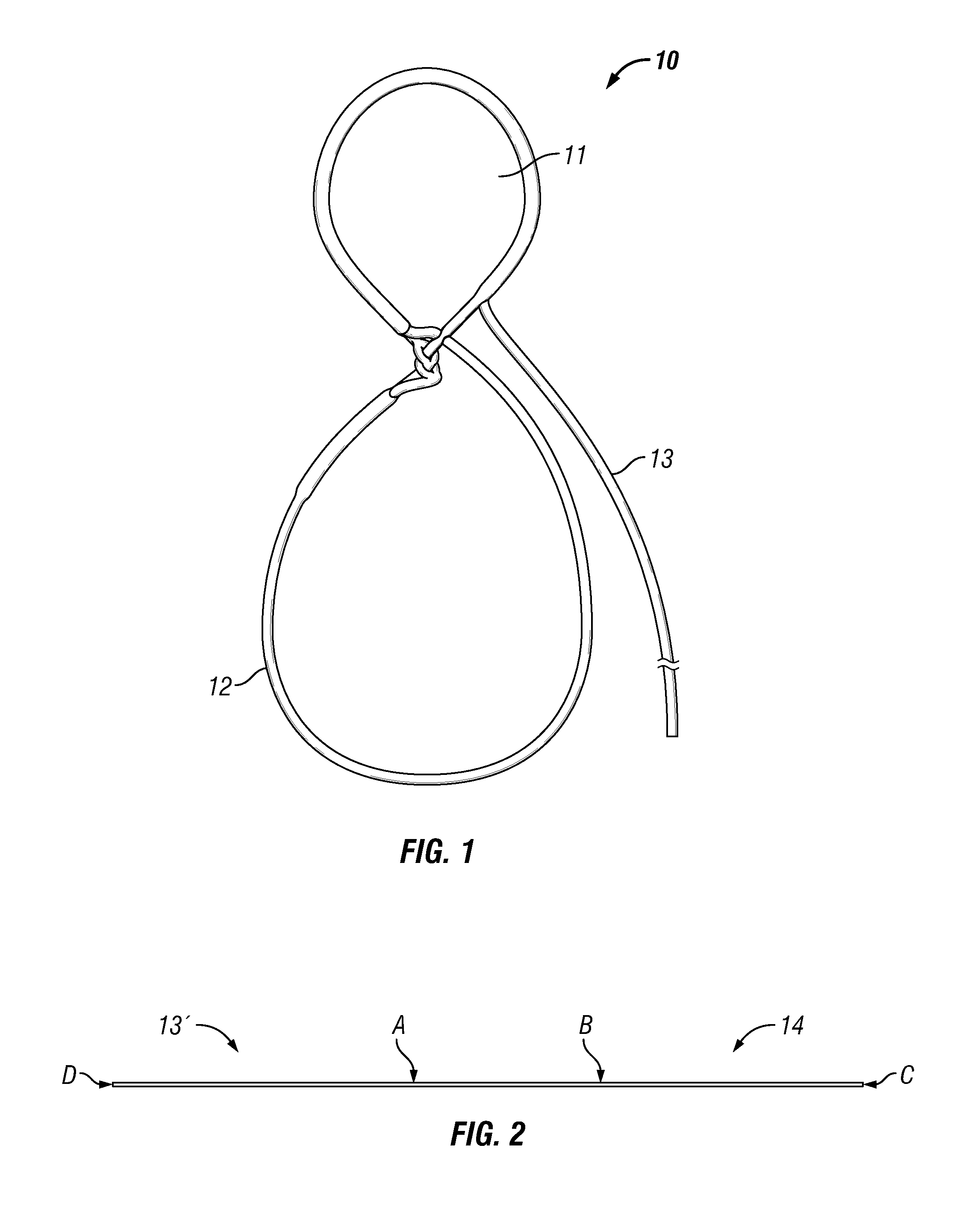Adjustable continuous filament structure and method of manufacture and use
a technology of continuous filament and adjustable structure, which is applied in the directions of yarn, transportation and packaging, surgery, etc., can solve the problems of compromising repair, increasing the incidence of suture breakage, and increasing the number of knots needed
- Summary
- Abstract
- Description
- Claims
- Application Information
AI Technical Summary
Benefits of technology
Problems solved by technology
Method used
Image
Examples
Embodiment Construction
[0026]FIG. 1 depicts one embodiment of a suture device or assembly 10. As shown, suture device 10 includes a nonadjustable portion 11, an adjustable portion 12, and a single free strand 13. The suture device 10 may be constructed from a single, continuous, line of filament, preferably with a hollow core along at least a portion of its length. As used herein, “filament” or “filamentary” is defined as a suture or other thread-like material having a hollow core along at least a portion of its length. Preferably, the “filament” is a braided suture having a hollow core along its length. As used herein, “continuous” is defined as a single length of material, or preferably, s single length of braided, hollow suture. The single line of filament may be constructed from homogenous or heterogeneous materials such as, but not limited to, polyester, polyethylene (including ultra-high molecular weight polyethylene (UHMWPE)), polytetrafluorethylene (including expanded polytetrafluorethylene), nylo...
PUM
 Login to View More
Login to View More Abstract
Description
Claims
Application Information
 Login to View More
Login to View More - R&D
- Intellectual Property
- Life Sciences
- Materials
- Tech Scout
- Unparalleled Data Quality
- Higher Quality Content
- 60% Fewer Hallucinations
Browse by: Latest US Patents, China's latest patents, Technical Efficacy Thesaurus, Application Domain, Technology Topic, Popular Technical Reports.
© 2025 PatSnap. All rights reserved.Legal|Privacy policy|Modern Slavery Act Transparency Statement|Sitemap|About US| Contact US: help@patsnap.com



